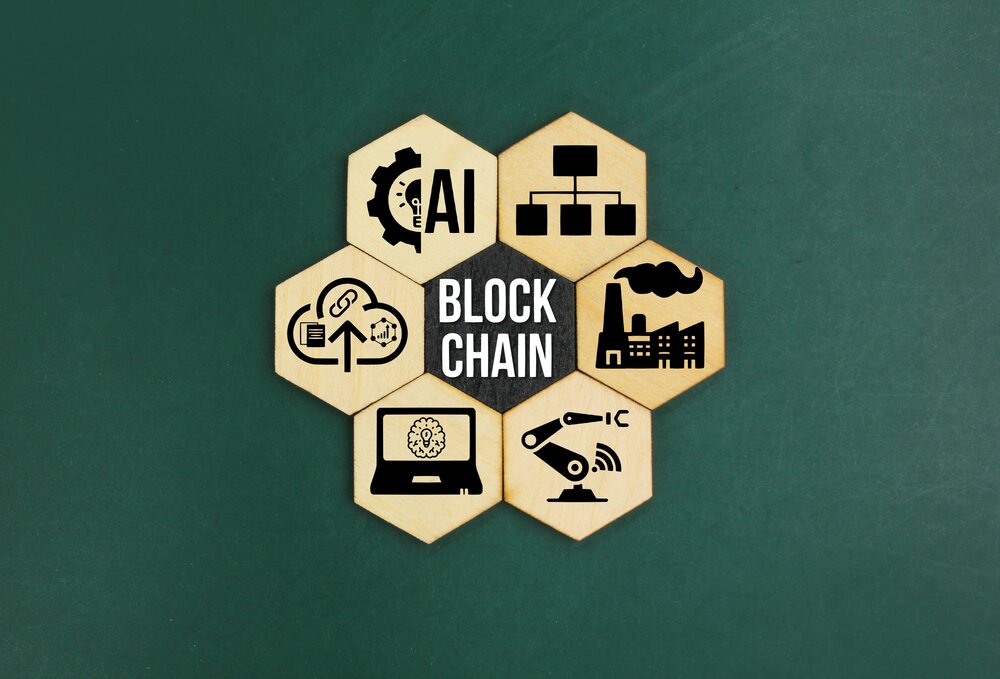Key Takeaways:
- Blockchain carbon accounting is new method for companies to track and verify greenhouse gas emissions, carbon footprints, and emissions reduction efforts.
- With blockchain, every single data input, upload, tweak, and change is publicly recorded, fully traceable, and automatically verified.
- As data standards mature, blockchain will become a widespread solution – our most powerful anti-greenwashing and accountability tool for reducing emissions globally.
Blockchain carbon accounting is an up and coming method for companies to track and verify greenhouse gas emissions, carbon footprints, and emissions reduction efforts.
By recording all transactions and data verification on a secure, transparent ledger, it ensures accurate carbon reporting, supports sustainability reporting goals, and strengthens accountability in carbon reduction, renewable energy, and climate change initiatives.
This article delves into the specifics of the tricky tech, breaking it down in a digestible way, explains exactly how this transforms carbon accounting and reporting, explores its benefits and limitations, with example, key details and our final take on the emerging tech.
What Is Blockchain Technology?
Blockchain technology was first introduced in 2008 by Satoshi Nakamoto, the creator (or group of creators) of Bitcoin.
They brought about a brand new concept: cryptographically linked blocks of data.
This combines crypto (hidden, secret) with graphy (writing, recording) to get cryptography – so, securing data through codes, algorithms, or mathematical methods.
So in a blockchain, data is packaged into blocks, which are then linked together through cryptography. A block is similar to a computer file:
- A file is just stored data with a name and format.
- A block is a structured bundle of data designed to link to other blocks securely.
Every block contains:
- A timestamp showing when the block was created
- A hash (a unique ‘fingerprint’ of data – a string of numbers and letters), however importantly, each block contains the hash of the previous block
- A cryptographic signature, usually also in a long string of numbers and letters.
It’s not on the computer directly like a file – the blockchain’s software saves blocks into its own data files inside a database in your computer.
When you download the blockchain software, you can get the whole history of every block that’s been added to the chain.
For example, with Bitcoin, every transaction is signed with the sender’s private key, and broadcast across all nodes (computers) in the network.
You can’t upload fake data, because every node automatically checks the balances, signatures, and rules of each transaction.
What Is Blockchain Carbon Accounting?
In Blockchain Carbon Accounting (BCA), all the data either manually or automatically sent in the carbon accounting software then goes directly into a blockchain. This data revolves around emissions, pricing, offsetting, verification records, and compliance certificates.
The software itself handles the upload, with blocks created by the blockchain network. The carbon accounting software doesn’t build their own blockchain – they might use an existing one (e.g. Ethereum; Polygon).
In some cases, a company might use a private or permissioned blockchain if they want to restrict who can see the data.
The 2 examples above are public blockchains, meaning anyone can see the data. The alternative, here, is a private blockchain – better suited to blockchain carbon accounting as emissions data can be confidential.
Why Use Blockchain for Carbon Accounting?

Transparency and Trust
Without blockchain, carbon accounting software gets users to gather data through manual and automated collection.
Human reporting leaves room for errors and mistakes, plus all data is private and stored centrally. This means that any changes can be made at a later date, easily going unnoticed.
With blockchain, every single data input, upload, tweak, and change is publicly recorded, fully traceable, and automatically verified.
This enforces accountability, leaving a timestamped audit from start to finish.
Real-Time Data and Automation
In traditional carbon accounting, there is a constant delay between which emissions are genuine and which are being reported.
As reports are only required monthly, quarterly, or annually, the current status of any company’s emissions is largely obfuscated. The lag gives organisations time to manage their numbers strategically rather than transparently.
While there are emerging technologies that automate data collection (sensors, IoT etc.), the data still feeds into a private system. With blockchain, every piece of data is locked into place.
This is real-time data that can actually be trusted, with proven permanence, accuracy, and verifiability.
Fraud Prevention and Verification
In carbon markets, double-counting and fraud happens when credits are resold or offsets are faked.
In 2023, the Guardian–Die Zeit–SourceMaterial investigation found that multiple Verra-verified forest conservation projects collectively overestimated around 89 million tonnes of CO₂ credits.
The investigation used peer-reviewed scientific methods from the University of Cambridge and the University of California with deforestation data and satellite analysis.
The carbon credits were bought by Disney, Shell, Salesforce, Gucci, and EasyJet.
Verra rejected the investigation’s claims in a formal rebuttal criticising the study’s “synthetic methods” and faced no clear backlash other than lost trust.
While Verra and Gold Standard are widely seen as trusted certifiers, blockchain offers genuine accountability by making every credit transparent, traceable, and tamper-proof.
If the Guardian–Die Zeit project had been on a blockchain system, each credit would have had a unique digital ID, linked to all project baselines and monitoring data, transparent for anyone to assess and check on progress.
Key Benefits for Businesses and Governments
Simplified Regulatory Compliance
In traditional carbon accounting, costs accumulate around auditing and verification, with third-party consultants hired to check emissions data against trusted frameworks from ISO to SECR.
This can cost anywhere from £2,000 to £10,000 for smaller assessments and even tens to hundreds of thousands of pounds if inaccuracies are found and reports have to be redone.
Moreover, the carbon accounting software gathers data but the auditor must then verify every single claim to ensure accuracy, consistency, and regulatory compliance.
With blockchain, the data’s integrity is self-verified (but external auditors can be required to confirm its accuracy and compliance).
Each data piece is cryptographically verified by immutable timestamps and source-linked data. Data from IoT sensors, surveys, or mobile data goes straight into the trackable trail. No room for error.
Improved ESG Reporting
ESG (Environmental Social Governance) reporting discloses exactly how a company is impacting the planet, people, and governance. This usually involves targets chosen to attract specific sustainability investors and partners.
In traditional carbon accounting, the data needed for ESG can be inaccurate, self-reported, unreliable, privately held hence prone to updating / changing past records with no trace of this showing.
With blockchain, ESG metrics are based on verifiable data that updates as soon as new info comes in, instead of once a year in a report.
Enhanced Supply Chain Tracking
For supply chain tracking, Scope 3 data is delayed and inconsistent. A retailer’s shipment leaving a Vietnamese factory, for instance, could be missing data on what petrol type the vehicle ran on.
With blockchain, however, each step would be recorded with automated data feeds, feeding directly into the audit.
This would involve each supplier – and some companies work with over 100,000 globally – using connected software that automatically uploads their data to the blockchain. It’s unrealistic, with no universal standard yet.
But do you know when it is realistic? In the near future, when it’s mandatory for most companies, if not all, to do carbon accounting and reporting, so their data is pre-collected and instantly transferable.
Real-World Examples and Case Studies
A real-world example is IBM’s private blockchain called Hyperledger Fabric, used by businesses to record renewable and emissions data in a transparent way.
It enables others to tokenise clean energy linked to real carbon data from smart meters or IoT devices. It’s active in pilot, making waves slowly amidst major scalability issues.
Are There Any Challenges and Limitations?
Confidentiality
Blockchain’s whole point is openness and immutability, but carbon accounting often needs discretion. Companies can’t risk leaking commercially sensitive or investor-facing data.
Energy Consumption and Blockchain Sustainability
Public blockchains were once very energy-intensive, relying on thousands of computers (miners) automatically competing to solve math problems (cryptographic puzzles).
The computers guess random numbers and hashes, and whichever one gets it first ‘wins’, by proving its used real resources (electricity, computing power).
Importantly, this prevents cheating because altering one block would require redoing every cryptographic puzzle faster than the entire network.
However, since Ethereum and similar networks moved to proof of stake, energy use has dropped by over 99%, greatly improving sustainability issues.
An alternative is permissioned blockchains, using a small group of trusted participants to check and add blocks. We lose decentralisation and openness, however make the process low-energy, efficient, fast.
Data Quality and Integration
Blockchain only secures what’s entered. This means that inconsistent or inaccurate carbon data can still cause errors unless integrated with reliable, standardised inputs.
So if data is uploaded incorrectly, you can only clutter and correct later, not edit or amend. That being said, integrity is guaranteed with secret revisions impossible.
Regulatory and Market Barriers
Blockchain is in its nascence. There are few agreed governmental rules in recognition of it, and while global standards are emerging through groups like ISO TC 307 and Climate Chain Coalition, widespread adoption and regulation remain limited.
Carbon markets still rely on Gold Standards and Verra, which have lightly commented on the new tech but not taken steps towards integration.
Emerging Trends and Future Outlook

Tokenisation of Carbon Credits
Tokenisation of carbon credits means turning a carbon credit into a digital token on a blockchain, with some projects already tokenising millions of Verra-verified carbon credits.
After Verra suspended crypto bridging (the early, unregulated way that it started), tokenisation progress only continued in small, controlled projects.
Smart Contracts for Automated Offsetting
Smart contracts automatically execute actions (e.g. a company offsetting / buying carbon credits) after certain conditions are met (e.g. after they emit a certain amount, or surpass a threshold).
In experimental stages for now, the smart contracts would run directly on the blockchain, allowing offsetting to happen transparently and verifiably.
Interoperability Between Platforms
All carbon systems speak their own data languages. If they had one shared language, they could be interoperable – able to exchange information easily and instantly sync with one another.
This isolated fragmentation is a big missing link for blockchain carbon accounting, with groups like Climate Action Data Trust (CAD Trust) working on new shared data standards.
Currently, CAD Trust is live as a decentralised metadata platform linking major carbon registries, including Gold Standard, with others preparing to join.
How to Get Started With Blockchain Carbon Accounting
Choosing the Right Blockchain Platform
First, choose which type of blockchain works best for you. A public blockchain like Ethereum should be your priority if you just want pure transparency and easy public trust.
However, public systems expose all data and can raise security and GDPR concerns.
Most companies and governments instead choose permissioned blockchains, which keep data private while still ensuring integrity, control, and verification.
Integrating With Existing Systems
Carbon accounting data is commercially and legally sensitive, so the vast majority of blockchain carbon accounting software use permissioned instead of public.
Financial estimates, locations, supplier details and deep business info can be confidential.
With permissioned blockchains, data is secured through APIs to keep it verified but not exposed publicly.
Working With Verified Carbon Standards
Blockchain carbon accounting software must be aligned with recognised frameworks. Aligned simply means it uses their rules, data formats, and methods of verification.
To test this, check the platform’s integrations, look for API links, see if methodology follows standards like the GHG Protocol or ISO.
Final Thoughts
The point of carbon accounting is to make companies accountable and showcase their footprints instead of keeping them hidden.
The problem is that data is still private, selectively disclosed, and often presented in strategic reports only when it suits stakeholders.
Blockchain carbon accounting solves this by making emissions data public, verified, traceable, and trackable in real time.
It still faces barriers such as interoperability, data privacy, and limited regulation, but as seen with the 99% energy reduction of public blockchains, these challenges are increasingly surmountable.
Our final thoughts? Blockchain is not inevitable, but its rise in carbon accounting seems increasingly unstoppable.
With carbon accounting becoming mandatory worldwide, the next natural demand is for secure, auditable, and interoperable systems.
As data standards mature, blockchain will become a widespread solution – our most powerful anti-greenwashing and accountability tool for reducing emissions globally.
While blockchain carbon accounting is a powerful route to transparency, it is not the only path to reliable reporting. Gaia’s Carbon Accounting software already automates data collection, standardises verification, and aligns with ISO and GHG Protocol frameworks, ensuring accuracy today while staying ready for future blockchain integration.
More Information
https://www.iso.org/committee/6266604.html
FAQs
What is blockchain carbon accounting?
In Blockchain Carbon Accounting (BCA), all the data either manually or automatically sent in the carbon accounting software then goes directly into a blockchain. This data revolves around emissions, pricing, offsetting, verification records, and compliance certificates.
Why use blockchain for carbon accounting?
With blockchain, every single data input, upload, tweak, and change is publicly recorded, fully traceable, and automatically verified. This enforces accountability, leaving a timestamped audit from start to finish.
What is the future of blockchain in carbon accounting?
With carbon accounting becoming mandatory worldwide, the next natural demand is for secure, auditable, and interoperable systems. As data standards mature, blockchain will become a widespread solution – our most powerful anti-greenwashing and accountability tool for reducing emissions globally.

